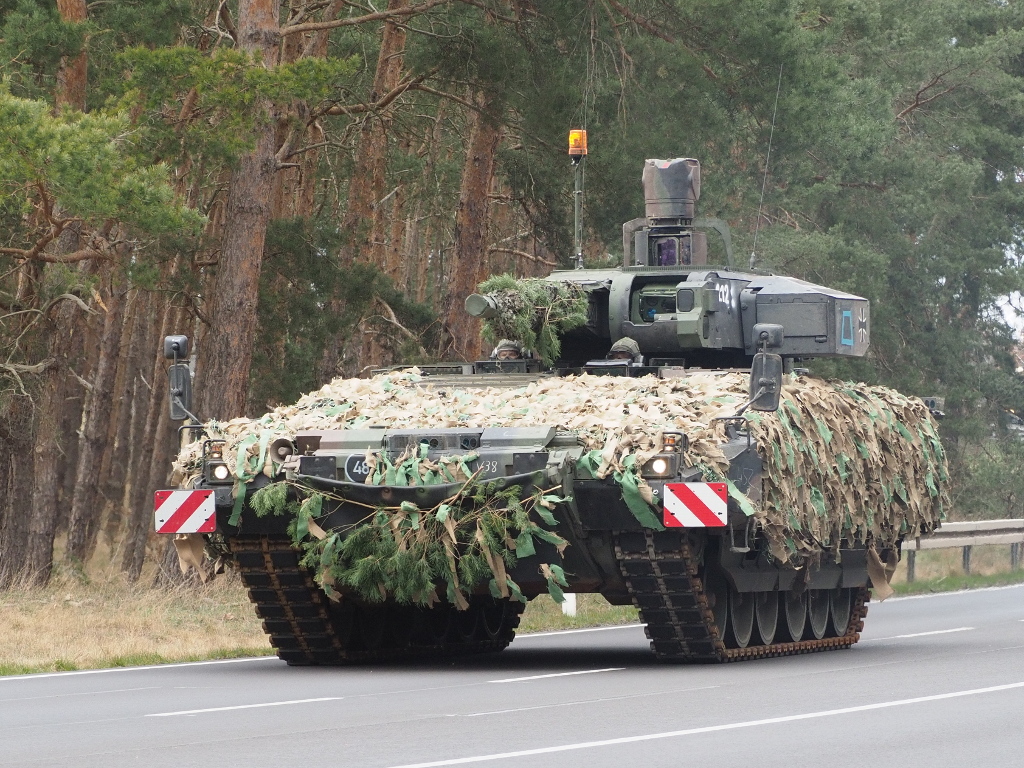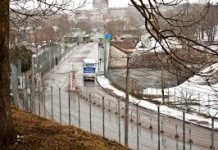
On a bright morning at Germany’s Wunstorf Air Base, a historic milestone was reached when a Puma infantry fighting vehicle was loaded into the cargo hold of an Airbus A400M Atlas. This event marked the first time the German Air Force successfully transported the 31.5-ton armored vehicle by air, setting a new benchmark for the heaviest single piece of cargo ever carried by the A400M. The operation demonstrated a significant enhancement in Germany’s tactical deployment capabilities and its readiness to respond swiftly to global crises.
Conducted by Lufttransportgeschwader 62, the operation signals a major advancement in the Bundeswehr’s strategic mobility. With NATO increasingly emphasizing rapid response, the seamless coordination between advanced ground systems and airlift capabilities gains new importance. But how exactly does a 43-ton vehicle make it into the skies—and what does this say about future warfare?
Developed by Krauss-Maffei Wegmann and Rheinmetall Landsysteme, the Puma is one of the most advanced IFVs in the world. Its sleek exterior conceals state-of-the-art technology optimized for modern combat. Its main armament—a 30 mm Rheinmetall MK30-2/ABM autocannon—can fire up to 200 rounds per minute and engage targets at a distance of 3,000 meters using airburst munitions. The vehicle also includes a 5.56 mm coaxial machine gun, though some observers criticize this choice, arguing that it lacks the impact of heavier 7.62 mm weapons seen on counterparts like the U.S. M2 Bradley or Russia’s BMP-3. For anti-tank missions, the Puma is equipped with the MELLS (Spike-LR) missile system, capable of striking targets nearly 4.5 kilometers away with exceptional precision.
Protection is ensured through modular armor configurations using Rheinmetall’s AMAP-B and AMAP-SC systems. The lighter “A” version defends against 30 mm rounds and shaped charges, while the “C” version increases protection at the expense of weight, pushing the total mass to around 43 tons.
Powered by an 800 kW MTU diesel engine, the Puma can reach 70 km/h in forward gear and 30 km/h in reverse, rivaling main battle tanks like the Leopard 2 in speed and agility. A six-wheel suspension system minimizes vibrations, improving crew endurance during high-speed operations.
Advanced optics, thermal sensors, and the MUSS 2.0 active protection system deliver all-around situational awareness and missile countermeasures. New upgrades—such as the Dedrone RF-300 system introduced at Eurosatory 2024—enable drone swarm detection, further bolstering battlefield survivability.
However, the Puma’s complex systems and weight have raised concerns. Early models experienced technical issues with electronics and water leakage, delaying widespread deployment. Additionally, the selection of a lighter caliber machine gun remains contentious among military analysts.
The A400M Atlas, a key element of Germany’s strategic airlift fleet, is powered by four Europrop TP400-D6 turboprop engines—each producing 11,000 horsepower. The aircraft can carry up to 37 tons over 3,300 kilometers and boasts a 17.7-meter-long cargo bay that accommodates a wide range of military hardware, including NH90 helicopters and various armored vehicles.
Unlike larger American cargo planes like the C-17 Globemaster III, the A400M is built for flexibility. It can operate on short and unpaved airstrips, requiring just 1,000 meters of runway—whether grass, gravel, or sand. With its fly-by-wire system and cockpit design derived from the Airbus A380, the A400M also serves as a multi-role platform, capable of aerial refueling and medical evacuations.
Meticulous planning went into preparing the Puma for air transport. Engineers from the Air Force, Army, and Federal Office for Bundeswehr Equipment collaborated with Airbus and Rheinmetall to adapt the vehicle for flight. The Puma was stripped down to its lighter A configuration by removing additional armor, the MUSS system, and reactive panels, bringing its weight just below the A400M’s 32-ton single-cargo limit. Uneven weight distribution required exacting load calculations.
The vehicle was carefully loaded using ramps and a winch rather than its own power, to avoid damaging the aircraft interior. Stabilizers supported the aircraft during the process, while the vehicle was secured with chains at designated anchor points—a procedure refined through simulations and coordination with manufacturers.
According to pilots from Lufttransportgeschwader 62, the actual flight proceeded without complications, highlighting the A400M’s reliability. A Bundeswehr report indicated that with practice, the entire loading process could be completed in two hours with a minimal crew, pointing to improved future efficiency.
This successful airlift builds on earlier trials, including a 2020 attempt to transport a GTK Boxer, which had to be disassembled due to weight restrictions. In contrast, the Puma’s ability to be transported in one piece—even if lightly configured—marks progress, although it still necessitates a second aircraft to carry its additional armor and systems.
Comparative analysis highlights the logistical challenge of moving IFVs by air. The U.S. M2 Bradley, slightly lighter than the Puma, is regularly airlifted via C-17s, which can carry two at once. Russia’s lighter BMP-3 is easier to deploy via Il-76s but lacks the Puma’s advanced protection and electronics. Sweden’s CV90, another top-tier IFV, ranges from 23 to 35 tons and enjoys broader international adoption thanks to its balance of cost, protection, and mobility.
Both the Puma and A400M have faced reliability issues. Germany’s A400Ms suffered from low operational readiness in their early years—just 38% were flight-capable in 2017. The Puma similarly experienced setbacks, such as the temporary grounding of 18 units during a 2022 NATO exercise due to electronic malfunctions, which forced a brief return to older Marder vehicles.
Yet, this test comes as Berlin reinvests in defense. Following Russia’s 2022 invasion of Ukraine, Germany increased military spending to meet NATO’s 2% GDP target. With 350 Pumas in service and 154 scheduled for S1-standard upgrades by 2029, the vehicle is central to the Bundeswehr’s mechanized infantry forces. These upgrades include the MELLS missile, modern communication systems, and drone-detection tools, aligning the vehicle with NATO’s Very High Readiness Joint Task Force standards.
The A400M also supports NATO’s broader rapid-response initiatives. Its role in past missions—from Afghanistan to disaster relief in Libya—demonstrates its operational flexibility. However, needing a second aircraft to carry full Puma armor exposes a logistical shortcoming compared to U.S. capabilities, where a single C-17 can carry heavier vehicles like the Abrams tank.
As adversaries develop heavier armored platforms—like Russia’s 48-ton T-15 Armata—the ability to airlift such systems becomes increasingly vital. The A400M’s success with the Puma, even in a reduced configuration, shows potential—but it has not yet been tested at scale. Germany’s goal to certify this capability, pending final approval, reflects its intent to fill a long-standing gap between tactical and strategic mobility.
While this operation strengthens Germany’s contribution to NATO’s quick-reaction forces, questions remain. Can this model scale to large deployments? Can armor modules be reassembled quickly enough in combat zones? These are challenges that future trials must address.
For now, this test represents a significant milestone in Germany’s military modernization. Combining the firepower and protection of the Puma with the global reach of the A400M gives the Bundeswehr enhanced flexibility in responding to emerging threats—from Eastern Europe to other high-stakes regions. Yet, simplifying the complex logistics of deployment remains a critical focus area.
In a world of evolving warfare, this achievement underscores a broader trend: NATO militaries are investing in systems that offer both adaptability and technological edge. The success of this mission may be the first step in a more agile, responsive future force—but its true impact will depend on how well it integrates into real-world operations.




